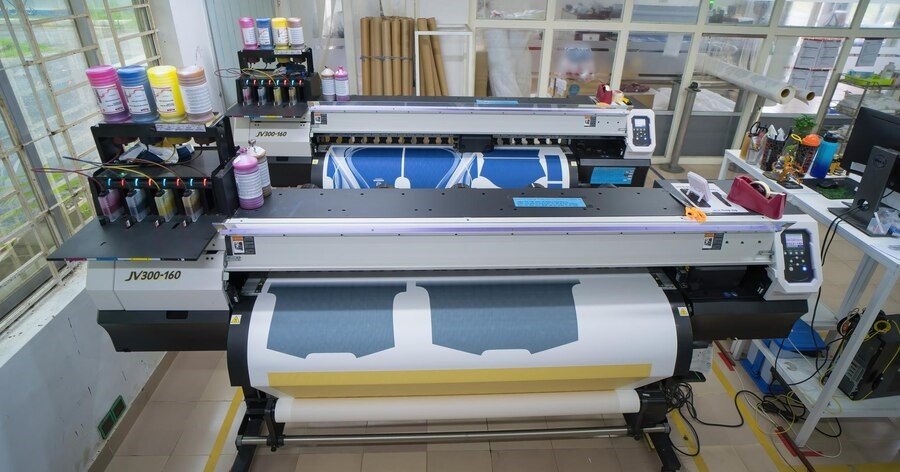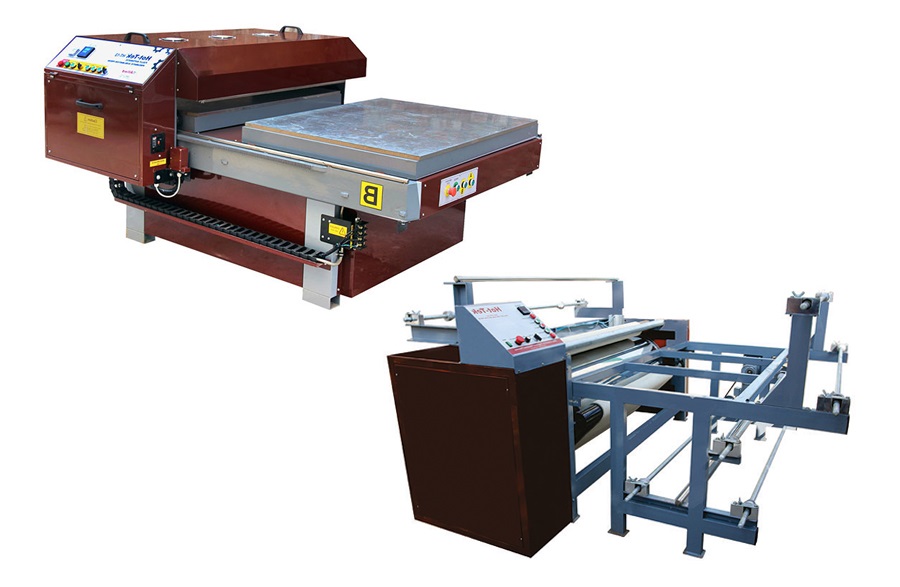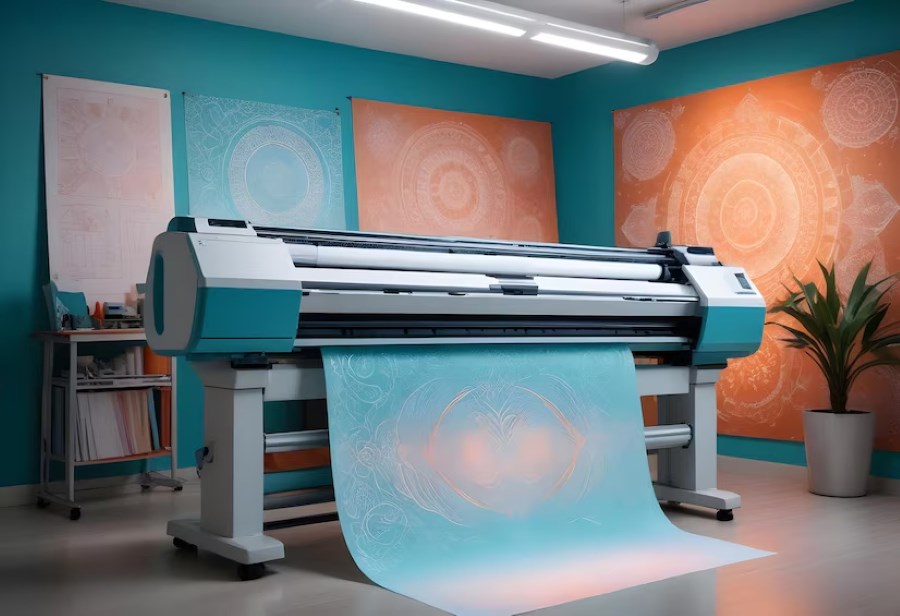A Comprehensive History of Sublimation Designing: Early Days to Modern Techniques

Table of Contents
ToggleSublimation designing, a process that involves transferring a digital image onto a substrate using heat and pressure, has revolutionized the printing industry. Its ability to produce high-quality, vibrant images has made it a popular choice for various applications, from apparel to home décor. Let’s delve into the fascinating journey of Sublimation designing, from its humble beginnings to its current state-of-the-art technology.
1. Early Beginnings of Sublimation Designing
While the concept was known, practical applications for sublimation in printing were limited until the mid-20th century.
The Discovery of Sublimation
The concept of sublimation can be traced back to the 18th century, when scientists discovered that certain substances could transition directly from a solid to a gaseous state without passing through the liquid phase.
Early Applications of Sublimation Designing
While the concept was known, practical applications for sublimation in printing were limited until the mid-20th century.
The Birth of Digital Sublimation designing
Sublimation designing and printing originated in the 1950s, but its core concept can be traced back even further. The process is built upon the scientific principle of sublimation—the transition of a substance from a solid state directly to a gas without passing through the liquid phase.
The Science Behind Sublimation
Sublimation designing and printing uses heat to transfer dye directly into the fabric or material. At high temperatures, the solid dye turns into gas and bonds with the fibers of the fabric, resulting in a long-lasting, full-color image.
Early Innovations of Sublimation Designing (1950s-1960s)
The first practical applications of sublimation designing technology began in the 1950s when scientists and engineers explored ways to use heat and pressure to transfer dyes onto surfaces like paper and fabrics. However, early sublimation was limited to specific substrates, as the materials required needed to have a receptive polymer coating for effective dye transfer.
2. The Rise of Commercial Sublimation Designing (1970s-1990s)
Sublimation design began to gain traction in the 1970s when advancements in printing technology made it possible to apply this method more efficiently. This period marked a turning point in how sublimation printing evolved from a niche process to a more widely recognized commercial method.
Development of Sublimation Printers
The introduction of the first specialized sublimation printers in the 1970s and 1980s played a critical role in popularizing this technique. These printers used sublimation ink, capable of producing vibrant and durable designs for textiles, ceramics, and other products.

Introduction to Fashion and Sportswear
Sublimation printing quickly found a home in fashion and sportswear industries. Designers were drawn to its ability to create vivid, all-over prints that did not fade, crack, or peel over time. By the late 1980s, sublimation had become the go-to method for producing high-quality, full-color designs on polyester-based fabrics, which were commonly used in athletic apparel.
Sublimation Designing in Promotional Products
The 1990s saw a significant expansion in sublimation’s use in creating customized promotional items, such as mugs, keychains, and mousepads. With sublimation, businesses could easily add logos, photos, and vibrant graphics to a wide range of products, making it an attractive option for corporate branding.
3. Modern Sublimation Designing (2000s-Present)
The 21st century has seen an explosion of sublimation designing, with significant advances in technology making the process more accessible and versatile than ever before. Today, sublimation printing is used in everything from sportswear to home décor, offering endless customization possibilities.

Digital Sublimation Printing
A Game-Changer: The advent of digital printing technology in the 1980s marked a significant turning point for sublimation design. This breakthrough allowed for greater flexibility and precision in creating and transferring images.
Enhanced Control: Digital printing enabled designers to manipulate images more effectively, resulting in a wider range of creative possibilities.
Polyester Sublimation
A Perfect Match: The development of polyester-based fabrics specifically designed for sublimation printing further expanded its applications. These fabrics offered excellent colorfastness and durability, making them ideal for a wide range of products.
Versatility
Polyester sublimation allowed for the creation of high-quality prints on various items, from apparel to home décor.
Sublimation Inks
Continuous Improvement: Advancements in sublimation ink technology have resulted in improved color gamut, faster drying times, and reduced environmental impact.
Enhanced Quality: Modern sublimation inks offer vibrant colors, deep blacks, and a wider range of tones.
Modern Applications of Sublimation Designing
Apparel-Custom T-shirts: Sublimation is a popular choice for creating personalized t-shirts with unique designs.
Sportswear: Athletic apparel, such as jerseys and jackets, can be customized using sublimation for team logos and player names.
Fashion Accessories
Sublimation can be used to create stylish accessories like hats, scarves, and bags.
Home Décor :Curtains and Pillows: Sublimation allows for the creation of beautiful and durable curtains and pillows with custom patterns.

Wall Art: Sublimation prints can be used to create stunning wall art pieces.
Table Linens: Tablecloths and napkins can be customized with unique designs using sublimation.
Promotional Items
Mugs and Keychains: Sublimation is a popular method for creating personalized mugs and keychains.

Phone Cases: Custom phone cases with high-quality images can be produced using sublimation.
Awards: Sublimation can be used to create customized awards and trophies.
Industrial Applications
Signage: Sublimation is used to create durable and eye-catching signage for businesses and events.
Banners: Large-format banners can be printed using sublimation for outdoor advertising and promotional purposes.
Vehicle Wraps: Sublimation can be used to create custom vehicle wraps for advertising or personal branding.
The Future of Sublimation Designing
3D Sublimation: New Dimensions: Expanding the technique to create three-dimensional objects and textures.
Innovative Products: 3D sublimation could lead to the development of unique products and designs.
Sustainable Sublimation Designing
Eco-Friendly Practices: Developing eco-friendly inks and processes to reduce the environmental impact.
Ethical Production: Sustainable sublimation aligns with the growing demand for environmentally responsible products.
Integration with Other Technologies
Hybrid Designs: Combining sublimation with other printing methods, such as inkjet or screen printing, to create hybrid designs.
Enhanced Versatility: Integration with other technologies can expand the range of applications for sublimation design.
Sustainability and Eco-Friendly Practices
With increasing consumer demand for sustainable products, sublimation printing has become a more eco-friendly option compared to traditional screen printing. Unlike screen printing, which uses harmful chemicals and excess water, sublimation is a cleaner process. There’s no need for water or chemicals to fix the dye onto the fabric, reducing the environmental impact of production.
Innovations in Substrate Variety
While polyester fabrics remain the primary substrate for sublimation, advancements in materials technology have expanded its application to a variety of items, such as phone cases, glassware, tiles, and metal sheets. This flexibility has further fueled the growth of sublimation in industries like home décor, custom electronics, and personalized gifts.
4. Current Trends and Future Outlook
Today, sublimation designing is more accessible and advanced than ever before. As the industry continues to innovate, several trends are emerging that promise to shape the future of sublimation printing.
On-Demand Printing
On-demand printing is becoming more popular with the rise of e-commerce platforms. Sublimation allows companies to produce custom designs as soon as an order is placed, reducing waste and inventory costs. This trend is expected to continue growing, particularly in the apparel and home décor industries.
Sublimation for Sustainable Fashion
As sustainability becomes a top priority, more companies are turning to sublimation printing for eco-conscious fashion lines. The process reduces excess fabric waste and water usage, making it a greener alternative to traditional dyeing methods.
AI and Customization
With artificial intelligence and machine learning tools becoming more integrated into the design process, sublimation printing is expected to embrace higher levels of customization. Customers can now create personalized items using design tools, and companies can offer fast turnaround times for unique, one-off creations.
Final Thoughts: The Future of Sublimation Designing
From its scientific origins in the 1950s to its modern-day applications, sublimation designing has transformed the way products are printed and customized. As technology continues to evolve, the future holds even greater possibilities for this versatile printing method. Whether it’s for sports uniforms, fashion apparel, home décor, or personalized gifts, sublimation designing will remain at the forefront of innovation in the printing industry.
At Arbish Sports Industries, based in Sialkot, Pakistan, we pride ourselves on being a leading manufacturer of sportswear. We utilize the latest sublimation methods and state-of-the-art machines to deliver high-quality, durable, and customizable products to meet the ever-evolving needs of our customers.
- Facebook
- Twitter
- Linkedin
- Whatsapp





